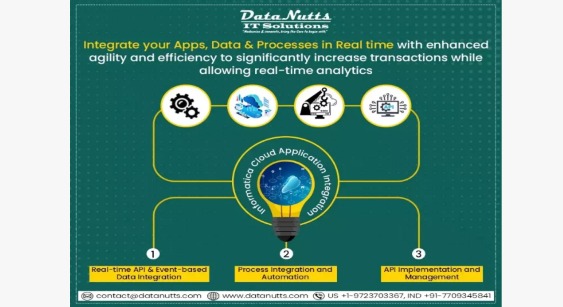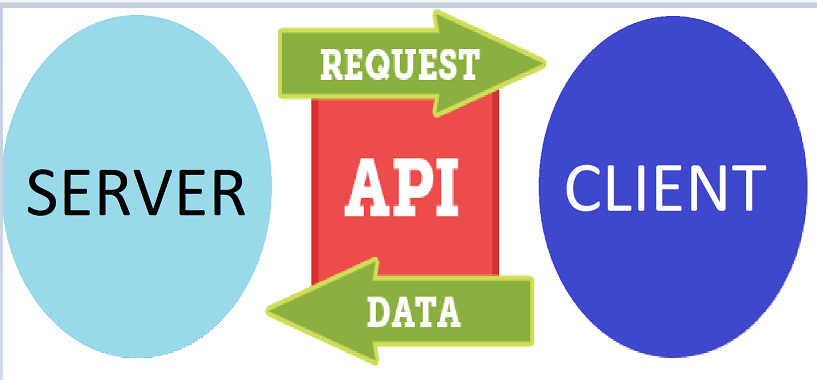
CAI-Cloud Application Integration – All About CAI
What Is CAI?
Cloud Application Integration (CAI) plays a crucial role in connecting different applications by facilitating API calls and automating processes. One of the primary use cases of CAI is enabling seamless data transfer and integration between on-premise and cloud-based applications.
Consider a scenario where two applications are being used, one on-premise and the other in the cloud. In order to pass data between these applications, it is essential to establish a robust integration mechanism, which can be achieved through cloud application integration.
CAI ensures the integrity and smooth flow of data between disparate systems, allowing them to work together harmo
What Is API?
At the core of CAI lies the concept of Application Programming Interfaces (APIs). APIs define a set of rules and protocols that enable different software applications to communicate and interact with each other.
They act as intermediaries, allowing applications to share data, functionalities, and services. In the context of cloud application integration, APIs are used to establish connections between various applications, enabling data exchange and synchronization.
APIs serve as the building blocks of CAI by providing a standardized interface for applications to connect and exchange information.
With the help of APIs, developers can create connectors or adapters that facilitate communication between different applications, regardless of their underlying technologies or platforms. These connectors act as bridges, ensuring that data flows seamlessly between applications, regardless of their location or deployment model

Why Use CAI?
By leveraging cloud application integration, organizations can achieve enhanced efficiency, improved collaboration, and streamlined workflows. Data can be seamlessly transferred between applications, eliminating manual efforts and reducing the risk of errors.
Moreover, CAI enables the automation of processes, such as running workflows in Cloud Data Integration (CDI), allowing for efficient data processing and transformation.
In conclusion, cloud application integration plays a critical role in connecting and integrating various applications in the cloud and on-premise environments. It relies on the utilization of APIs to establish communication channels between applications, ensuring smooth data transfer and process automation.
By embracing CAI, organizations can unlock the full potential of their applications, enabling seamless collaboration, enhanced productivity, and optimized business processes.
In the modern business world, enterprises need to process their data as fast as possible and need to process their data with different applications. CAI is providing such functionality where you can process your on-premise data quickly using CAI processes
With enterprises expanding their applications and data in multiple cloud deployments. At the same time keeping mission-critical applications on-premise. In which you can have sets of pricing databases, product databases, customer databases, and transaction databases distributed in cloud and on-premise applications based on the criticality of data.
In that case, it is necessary to have both the applications cloud and on-premise to be connected and have dataset transactions in real-time to process the order cycle. In CAI you can automate any datasets, user type, and endpoint to automate such business processes.
By leveraging cloud application integration, organizations can achieve enhanced efficiency, improved collaboration, and streamlined workflows. Data can be seamlessly transferred between applications, eliminating manual efforts and reducing the risk of errors.
Moreover, CAI enables the automation of processes, such as running workflows in Cloud Data Integration (CDI), allowing for efficient data processing and transformation.
In conclusion, cloud application integration plays a critical role in connecting and integrating various applications in the cloud and on-premise environments. It relies on the utilization of APIs to establish communication channels between applications, ensuring smooth data transfer and process automation.
By embracing CAI, organizations can unlock the full potential of their applications, enabling seamless collaboration, enhanced productivity, and optimized business processes.
In the modern business world, enterprises need to process their data as fast as possible and need to process their data with different applications. CAI is providing such functionality where you can process your on-premise data quickly using CAI processes
With enterprises expanding their applications and data in multiple cloud deployments. At the same time keeping mission-critical applications on-premise. In which you can have sets of pricing databases, product databases, customer databases, and transaction databases distributed in cloud and on-premise applications based on the criticality of data.
In that case, it is necessary to have both the applications cloud and on-premise to be connected and have dataset transactions in real-time to process the order cycle. In CAI you can automate any datasets, user type, and endpoint to automate such business processes.
What Informatica CAI Provides?
Informatica Cloud Application Integration (CAI) is a comprehensive integration platform that offers a wide range of capabilities for connecting and integrating applications across cloud and on-premise environments. Here are some key features and benefits of Informatica CAI:
- Application Integration: Informatica CAI allows seamless integration between various applications, enabling data synchronization, process automation, and real-time connectivity. It provides pre-built connectors and adapters for popular applications, making integration faster and easier.
- API Management: CAI provides robust API management capabilities, allowing organizations to create, publish, and manage APIs. It includes features like API security, access control, and usage analytics, ensuring secure and controlled access to APIs.
- Data Integration: Informatica CAI supports data integration by providing tools and features for data mapping, transformation, and cleansing. It enables organizations to extract, transform, and load data from different sources, ensuring accurate and reliable data integration.
- Event-Based Integration: CAI enables event-driven integration, where actions or events in one application trigger actions in other connected applications. It supports event-driven architectures, allowing organizations to build real-time, event-based workflows and processes.
- Process Automation: Informatica CAI offers process automation capabilities, allowing organizations to automate business processes and workflows across multiple applications. It helps streamline operations, improve efficiency, and reduce manual efforts.
- Cloud Data Integration: CAI seamlessly integrates with Informatica Cloud Data Integration (CDI), providing advanced data integration and transformation capabilities in the cloud. It enables organizations to process, cleanse, and transform data before integrating it with target applications.
- Hybrid Integration: Informatica CAI supports hybrid integration scenarios, enabling seamless connectivity between cloud-based and on-premise applications. It provides connectors and integration patterns to bridge the gap between different deployment models.
- Monitoring and Management: CAI provides monitoring and management capabilities, allowing organizations to monitor data flows, track performance, and troubleshoot integration issues. It offers real-time insights and analytics to ensure optimal integration performance.
CAI is ideally suited for service-oriented integration when you need:
- Long-running transactions that maintain state
- Short-running or transactional system integration processes requiring integration sequences, different execution paths, or composite transactions
- Rich semantics for parallel execution
- Timers and event triggers
- Rich event, fault, and error-handling systems that control how and what to compensate through automated compensation to roll back a transaction if all required steps are not completed successfully
There are other capabilities of CAI is also there like Screenflow for user task automation, workflow, and interactive access to data, Content-based routing, transformations to or from XML and non-XML types, decryption/ encryption, signature validation, authorization, and more.

Why CAI With DNITS?
Our CAI services help business users to establish real-time connections with their cloud applications and on-premise application. And also increases the performance of process as well as automate such dataset process where datasets /Users/Endpoints are present in both on-premise and cloud applications.
DNITS has experienced resources who have worked on Cloud Application integration services which will ensure cost reduction and process improvements.
DNITS’s phased implementation approach will be the best fit for your business and will match your financial requirements. Upgrade yourself with DNITS to a more organized, flexible, and scalable CAI hosting and implementation solution to keep your business data processing in the best way ever and ensures 100% control over your business.
What Does DNITS Guarantee To Your Business?
- Improved Data Quality for Your Business Needs!
- Reduce your valuable Time and Cost
- Avoid Data Duplication
- Increase your Business data’s Accuracy
- Best Data Compliance
- Informed Decision Making
- Handling end-to-end Change Requests
- Ease Data Mobility
- A Single Source of Truth
